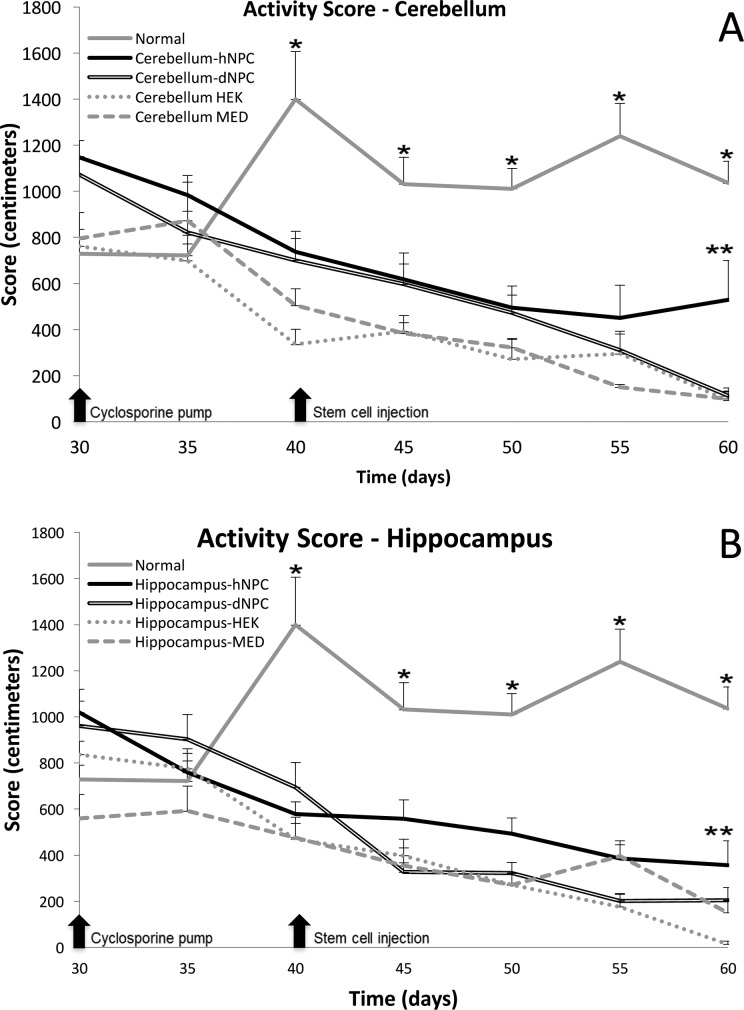Figure 2.
Open-field test was used to assess motor activity for untreated normal Han-Wistar (HW) rats (n = 9) or mutant spastic Han-Wistar (sHW) rats bilaterally injected into either the cerebellum (A) or hippocampus (B) with human neural progenitor cells (hNPCs; cerebellum, n = 12; and hippocampus, n = 12), dead NPCs (dNPCs; n = 12), human embryonic kidney (HEK) cells (n = 8), or culture media (MED; n = 8). (A) Analysis of activity scores between untreated normal HW rats and the cerebellar hNPC-treated group yielded significant differences starting at 40 d of age (F = 34.61; Tukey’s, *P < 0.05). The cerebellar hNPC-treatment group displayed statistically significant (Tukey’s, **P < 0.05) higher motor activity scores compared to the dNPC-treatment group at 60 d of age. (B) The same pattern of greater and sustained mobility is observed when contrasting the untreated normal group and all the hippocampal treated groups (F = 28.79; Tukey’s, *P < 0.05) starting at 40 d. Comparing the hippocampal hNPC- and dNPC-treatment groups, we did detect statistically significant differences (Tukey’s, **P < 0.05) in higher motor activity scores for the hNPC-treatment group at 60 d. All values are means ± SEM.

